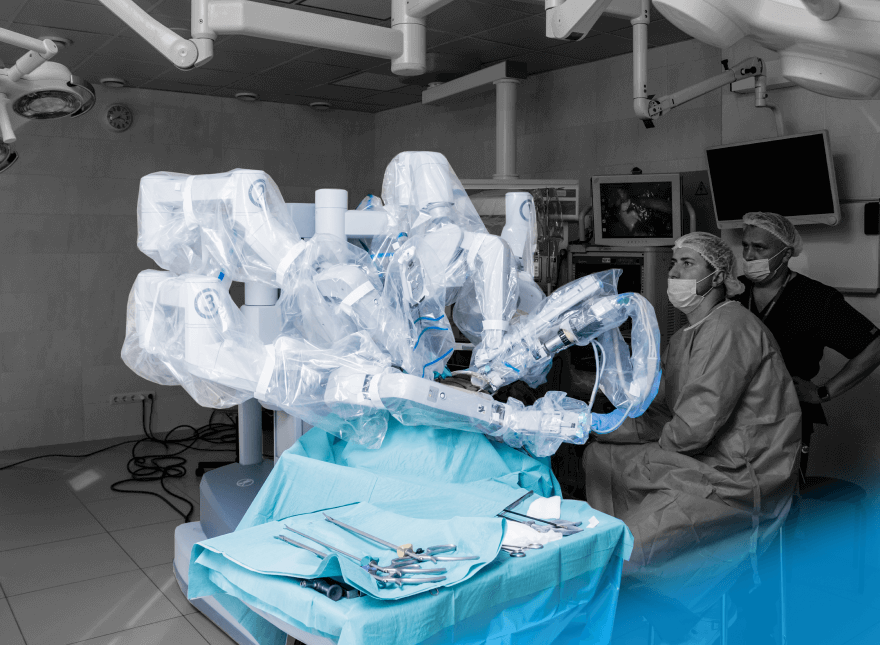How Robotic Process Automation Helps the Healthcare Sector Ease the Pandemic-Related Stress
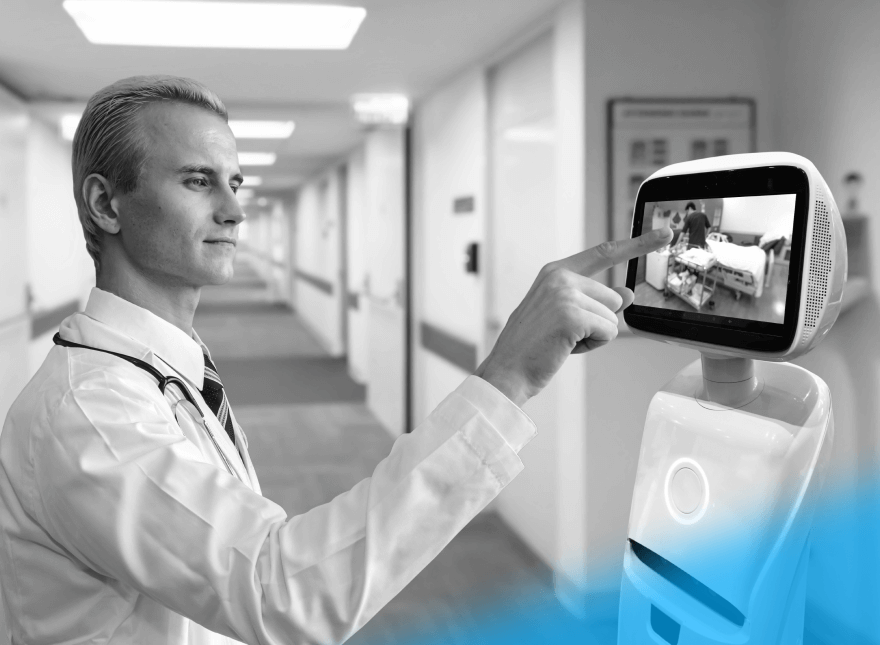
Almost half (42%) of healthcare providers experience burnout at some point due to excess work. Affected by the pandemic, healthcare facilities are stretched to the limit and are looking for a solution.
Robotic process automation (RPA) in healthcare can help with claim processing, make sure an organization is following its industry’s rules, and even take over some HR-related tasks. This article explains what RPA is and how it contributes to the healthcare sector.
Table of Contents
What is RPA in Healthcare?
RPA automates repetitive tasks using algorithms. It aims to reduce human intervention and increase productivity. Typically, RPA doesn’t include a physical robot operating within the facility. It is software coded to perform specific activities. They can be as simple as sending an automatic response email, or more complicated, such as analyzing administrative data.
According to McKinsey, the healthcare sector has the potential for automating around 36% of its workflow. This number decreases when it comes to professionals who are working directly with patients and whose tasks require expertise. For example, it’s feasible to automate only 13% of dental hygienists’ tasks.
RPA can not only benefit providers, but also healthcare payers. As we can observe from McKinsey survey, they are pushing for claims automation, followed by customer service and patient enrollment.
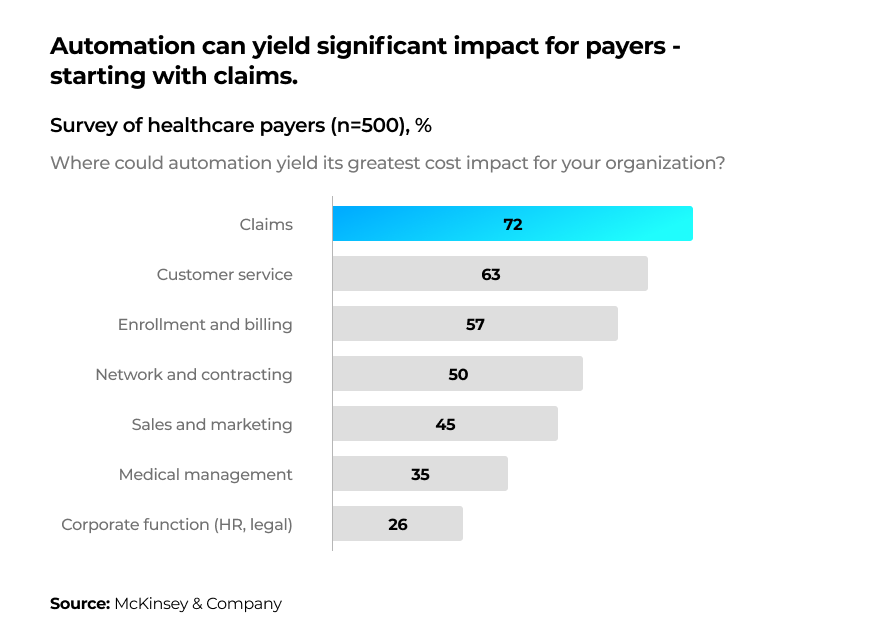
How Is the Pandemic Accelerating RPA Adoption?
COVID-19 impacts every industry in the world, and according to Bain and Company, it accelerated the automation initiatives.
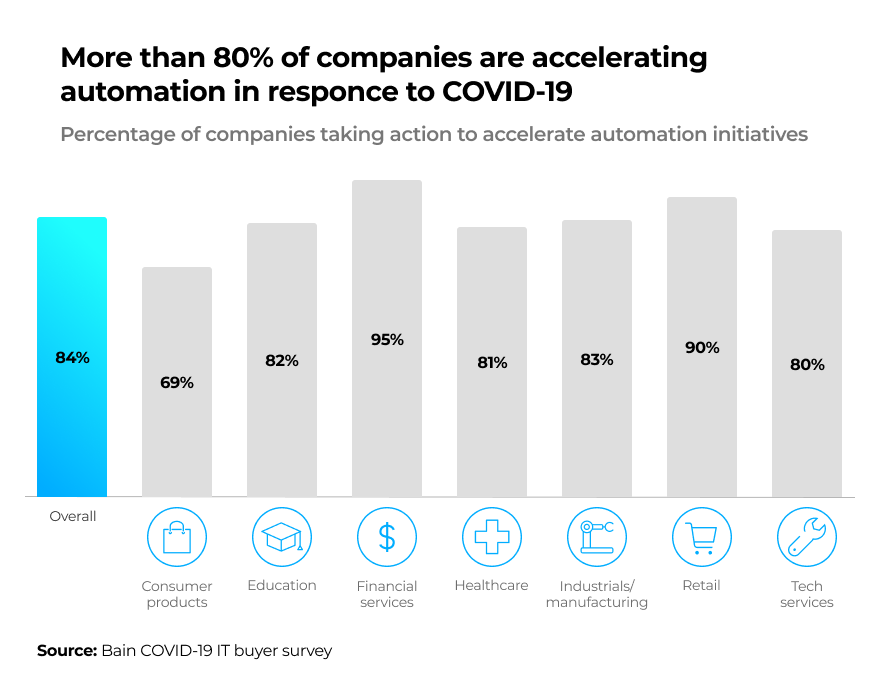
In the healthcare sector, coronavirus largely disturbed the daily operations. A recent World Health Organization survey shows that almost half of the countries surveyed (49%) reported disruption in treating diabetes. Forty-two percent of the respondents observed problems treating cancer. While 31% could not function well in cardiovascular emergencies. The UK alone has a backlog of 12 million canceled appointments due to the pandemic. There’s no surprise that healthcare providers are turning to automation.
Some Healthcare Organizations are Still Cautious
Automated healthcare systems have many benefits—they reduce manual workload, improve patient experience, and increase employee satisfaction. However, clinics are not rushing into automation. And here’s why:
- Initial investment and maintenance costs: Automation needs significant funds. According to Deloitte, one bot can cost between $5,000 and $15,000. Managers need to calculate when the profit from RPA will pay off the initial investment. And even after the solution is in place, vendors can still charge for maintenance of their product and software updates.
- Possibility of failure: According to studies, 30-50% of robotic automation projects fail. The cause of failure can be technical or human-related. For example, managers might not consider their clinic’s IT infrastructure while investing in software robots, or may simply automate the wrong tasks. The human factor plays an additional role: employees may not opt in if managers don’t combine automation initiatives with cultural change.
- Fear of job replacement: Healthcare providers can refuse to work with RPA software or even attempt to sabotage it out of fear of losing their jobs. Even though RPA can’t replicate human cognitive functions, it can replace many routine tasks.
Successful RPA Applications in Healthcare
Scheduling Patient Appointments
Scheduling appointments depends on the patient’s details and the doctors’ availability. Hospital staff members need to analyze all this information and fit the appointment into a doctor’s schedule. One out of three patients receiving appointments this way is unhappy with the assigned time slot, and the vast majority (85%) call the clinic to reschedule.
With robotic process automation in healthcare, when a patient fills in an appointment request, software robots scan the data and position the request in the correct queue based on the patient’s location, diagnosis, personal preferences, and the responsible insurance company. All this data is fed into the hospital’s back-end system, so patients can view their appointment details and reschedule online without bothering administrative employees with phone calls. This approach results in fewer errors, a better match, and higher patient satisfaction.
Swiftqueue Cuts Down the Costs of Appointment Scheduling
Swiftqueue uses a healthcare automation solution to connect hospitals’ data systems with patient engagement systems. This platform is implemented in the UK, US, Ireland, and Canada. Recently, hospitals in these countries started using Swiftqueue for scheduling patient appointments. They already see results. For instance, clinics in Ireland were spending around €2.25 on each appointment and the new platform made it five times cheaper.
Simplifying Claim Processing
Claim processing is a lengthy process of inputting data, conducting evaluation, and handling appeals. Besides losing time, administrative workers can make clerical errors related to data entry or compliance. According to studies, four out of ten submitted healthcare claims do not follow official demands.
Automation in the medical industry can fix this problem. Here’s what RPA bots can do:
- Spot compliance-related exceptions
- Perform a more accurate data entry
- Improve communication with third parties
- Reduce claim processing costs
- Eliminate backlogs by running outside the standard working hours
The State of Arizona Employs RPA Solutions
The state of Arizona is an excellent example of RPA solutions in practice. It provides health insurance through Care1st Health Plan Arizona. In the beginning, the state used a combination of 15 Excel macros to deal with claim processing and patient enrollment. This method was slow and unreliable. As a way of adopting robotics automation in healthcare, the state of Arizona deployed bots that substantially accelerated claim handling. A task that took up to ten hours to implement was reduced to one. Furthermore, this technology can process 20 claims per minute, which is almost seven times faster than using macros.
Extracting Patient Data while Remaining Compliant
RPA medical tools can automatically search for correct patient records in the hospital’s database and send them to the right person within the organization. This kind of robot would need a human employee’s credentials to access the network.
Healthcare workers can train RPA software to extract document metadata, including creation date and ID numbers of electronic medical record documents. Employees obtain this information by checking the properties of relevant files and folders. After “watching” this operation several times, bots can mimic humans. Some RPA software providers call this “desktop automation.”
Moreover, software robots make sure all the processes are traceable and documented in structured logs. This arrangement makes it easy to deal with external audits, even if they are unexpected.
Robotics in Healthcare Example from Health Fidelity
Another successful robotics in Healthcare example is Health Fidelity’s experience. They offer risk adjustment solutions to healthcare organizations. Risk adjustment is a method to offset the cost of offering healthcare insurance to high-risk individuals, such as the ones suffering from chronic diseases. The company combines the UiPath RPA platform with natural language processing technology. This solution gives the clients a fast and secure way of retrieving medical records from EHRs.
Conventionally, healthcare organizations avoided using clinical records in risk adjustment as the cost of extracting it manually can go as high as $15 per record. UiPAth robots can extract 200 documents a day per robot and significantly reduce costs.
“We quickly determined that UiPath and its RPA technology could give us a better way to extract members’ clinical documents, and do it in a HIPAA-compliant manner with little to no involvement from our clients’ technical resources.”
Joe Bonazza, Director of Data Integration at Health Fidelity
Verifying Credentials
Robotic automation in healthcare has also found its way to the human resources (HR) department.
Rapid COVID-19 infections caused a shortage of medical workers. In response, hospitals started hiring new employees and accepting retired physicians as volunteers. This process overwhelmed HR departments and forced them to think about automation. They let software robots take over some of the tasks, such as:
- Credential verification
- Background checks
- Parts of the onboarding process, such as notifying everyone about the new colleague and assigning volunteers to job areas
As a result, this medical RPA solution reduced the average time of processing new volunteers from five days to just four hours.
Processing Payroll
Manual payroll has many weaknesses. It allows human error and drains HR and financial workers. Also, it poses data privacy threats as it can expose sensitive employee information.
Divurgent Automates a Daunting Payroll Process
Divurgent, a consulting firm operating in the healthcare sector, worked together with physicians searching for automation opportunities in their payroll system. The client’s existing process was labor-intensive. Someone had to collect data from different sources and enter it into Excel sheets, then send the result to the manager for final approval. After completing the calculations, this HR employee sent personal emails to each healthcare provider.
Divurgent developed a platform that would gather clinicians’ data, calculate the wages, and issue a pay statement in pdf format. This type of robotic process automation in the healthcare industry cut the payroll processing time from 72 hours to a mere 15 minutes.
Dealing with COVID-Related Administrative Burden
When the pandemic hit, Cleveland Clinic was one of the hospitals that offered approved drive-through testing for COVID-19. The protocol required all patients arriving for testing to be registered in the hospital’s database. Healthcare administrators took over the preparation of testing kit labels for every person. And they had to register every new visitor in the EHR system. This manual process caused labeling errors and resulted in six-hour waiting lines.
The situation was exhausting until Cleveland Clinic decided to adopt RPA in healthcare. In 48 hours, the Clinic deployed a software robot, which began managing the patient data registration and labeling tasks. Humans needed around three minutes to complete these activities. The robot could clear them in sixteen seconds with zero errors.
The Mater Hospital in Dublin followed a similar approach to COVID testing. They also relied on software robots to handle administration.
“With the Covid-19 pandemic unfolding now, it is crucial that all frontline staff are freed up as much as possible to spend time with patients and deal with this outbreak, rather than being in front of computers.”
Jincy Jerry, Assistant Director of Nursing at Mater Hospital
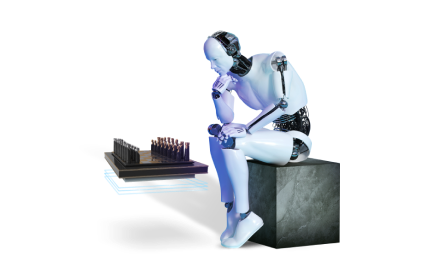
Where to Start
RPA is not the only answer to the pandemic-related challenges. But it is worth a try, and the healthcare sector is aware of this. Gartner’s research demonstrates that RPA is trending in the healthcare sector—50% of US healthcare providers plan to invest in RPA during the upcoming three years. This number is ten times higher than it was in the beginning of 2020.
When undertaking RPA projects, think about the following:
- Will your IT infrastructure be compatible with the new software, and which external IT resources will you need to acquire?
- How will the current RPA project affect your workforce?
- What are your short-term and long-term automation goals?
- Which activities do you want to automate first?
“Don’t try to automate your hardest and most complicated process first. Look for the low-hanging fruit that has the most repetitive, manual steps that cause heartburn for the end user.”
Nikki Ahlgren, Customer Success Director and Healthcare Expert at UiPath
And finally, ensure that you aren’t going at it alone by finding a reliable RPA partner. For example, Softeq industrial automation offers the services you need under one single roof.
More articles on the topic




